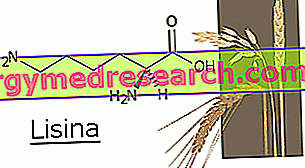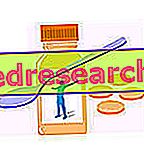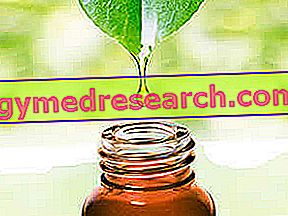Functions of the lysine in the body
Lysine is an essential amino acid with a radical with an amino group, which gives it a basic behavior.
In its hydroxylated form, thanks to the intervention of vitamin C, it is part of the composition of collagen. Together with methionine it represents the amino acid precursor of carnitine.
Lysine promotes the formation of antibodies, hormones (such as growth) and enzymes; it is also necessary for the development and fixation of calcium in the bones.
Lysine is also important as a precursor to an important vitamin, called niacin, vitamin B3 or PP. Niacin deficiency, frequent in the post-war period due to a diet almost exclusively focused on the consumption of polenta, is known as pellagra.
The hair consists mainly of proteins and in particular of two amino acids, lysine and cysteine (both contained in keratin). For this reason lysine is present in numerous hair supplements and in products dedicated to the treatment of androgenetic alopecia.
The use of lysine has also been proposed to prevent the reactivation of herpes simplex, a virus responsible for the recurrent episodes of cold sores.
For decarboxylation (generally performed by bacteria, such as intestinal or vaginal ones), lysine is transformed into cadaverine, a putrefactive molecule whose name is a whole program (in addition to a particularly unpleasant odor it has toxic properties; it is formed in the colon in case of a high-protein and low-fiber diet, as well as changes in the intestinal flora).
Lysine in food

In a given food, the essential amino acid present in lower concentrations is called a limiting amino acid, precisely because it limits protein synthesis.
Lysine is therefore the limiting amino acid of cereals. On the other hand there are foods, such as legumes and dairy products, particularly rich in lysine. Here then is that the association of cereals and legumes (pasta and beans, perhaps with a sprinkle of cheese), allows the best use of the proteins of both (the deficiencies are reciprocally filled, for this we speak of "mutual integration").
Oats and amaranth have a much higher lysine content than other cereals.
Finally, it is worth remembering that in the human organism there is a small pool of free amino acids which, even if it is not intended as a real reserve of nitrogenous substances, is able to fill temporary amino acid deficiencies. Lysine deficiency is therefore manifested in the case of a chronically poor amino acid diet, while there is no risk of significant deficiencies if cereals are consumed alone from time to time, without combining them with dairy products or cheeses. On the contrary, vegan people, who therefore follow a diet without food of animal origin, should pay particular attention to the respect of these particular food associations.



